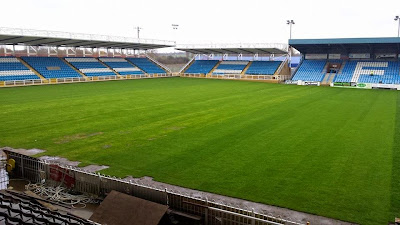 |
| The 1928 Lions Tourists. Tommy Askin is on the front row, second right. |
Until the advent of super league, the undeniable pinnacle of
representative rugby was to make a Lions Tour. Every four years, the
best of British gathered for a two to three month tour down under.
Somehow they were lost amid the upheaval in our sport, and now we have
the Four Nations tournament instead. Our union counterparts still manage
to organise Lions tours though. Given the rich history of rugby league
tours, it’s hard not to feel nostalgic at their passing.
On the walls of the Rovers clubhouse are some of those marvellously evocative Melba Studios photographs of the entire tour party lined up at the Sydney football stadium in their GB kit, There’s Gary Cooper and Don Fox on the 1962 tour, and I guess we’ll never know why Terry Clawson wasn’t there with them. Most tours since that date had a Rovers representative. In 1966 it was Carl Dooler, then in 1970 Jimmy Thompson. On the next tour Jimmy was joined by Keith Bridges and Steve Nash. In 1979 it was Steve Evans turn, and in 1984 David Hobbs. 1988 was the only year no Rovers player was selected, probably because we’d just come out of the second division, but in 1990 there were Chris Bibb, Deryck Fox and Ian Smales who went to New Zealand. On the last full Australian tour Fox was joined by Paul Newlove. Steve Molloy made the 1996 tour, some achievement for a player outside the top flight, our 14th tourist.
Featherstone’s first, and until the 1960s only Great Britain international player was Tommy Askin on the 1928 tour. Rovers had enjoyed a good run in the league that year, with a talented three-quarter line of Askin and Jack Hirst at centre, Jim Denton and George Taylor on the wings. The run was to take them all the way to the Championship final, a fantastic achievement for a club in only its seventh season. Rovers were deprived of Tommy Askin’s services for the final four games, including of course the final against Swinton, as he was already on a boat on the way to Australia with the Lions tourists. Tommy had played at centre in the tour trial match, but wasn’t initially selected. The selection committee let it be known they were after a winger so Rovers duly picked him in the number two shirt, where he picked up a few tries and got the nod for selection. The club’s supporters made a tremendous financial effort to present him with a full trunk of clothes to take with him on tour. He did them proud.
When he walked out at Brisbane on the 23rd of June 1928 in front of 39,00 people, Tommy Askin became Featherstone Rovers first Great Britain player. He played in all three tests in Australia, and all three in New Zealand, three times as a winger and three times at centre. His only international try was a vital one, securing Britain a 6-5 win against New Zealand in Christchurch, and clinching the series 2-1. The Lions had previously won the Ashes by the same 2-1 margin. In the book ‘Rugby League Lions’ by historian Les Hoole, there is a magnificent double page photo of Tommy playing in the first test against Australia, in possession and in full flight as the Australian cover races across to tackle.
In all, Askin played 15 games on tour and finished fourth among the try scorers with a respectable nine. After a very successful tour, the players all received a £136 bonus, decent money at the time. That was the end of Tommy’s international career though. He left Featherstone for Leeds in February of the following year, where he never really settled, before transferring to Castleford, who he played for at Wembley in 1935. In his thirties he came back to Featherstone to finish his career where it started fourteen years earlier.

No comments:
Post a Comment